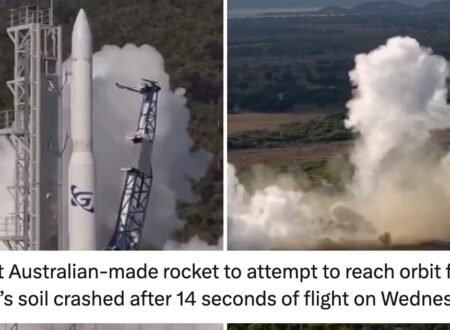Water scarcity is the first signal of a warming planet

Climate change has many signals—rising sea levels, melting glaciers, stronger storms—but the first and most immediate sign for most people on the planet is water. Not too much of it. Not too little. But both. At once.
Water scarcity stands as a leading indicator of climate change, demanding urgent attention. Water is no longer just a resource issue. It’s not a “next decade” concern. It’s a frontline climate challenge happening in real time—one that touches every aspect of life, industry, and geopolitics.
Many of the world’s most water-stressed regions are already experiencing the effects of intensifying water challenges. In these areas, the impacts are not theoretical—they’re visible in the declining quality and reliability of water supplies, and in the growing urgency faced by the industries and communities that rely on them.
Water scarcity is climate change in action
Unlike carbon emissions, which are invisible and cumulative, water scarcity is visible, tangible, and immediate. It shows up in headlines and household faucets. It drives migration and market volatility. It disrupts food, energy, and technology supply chains.
Here’s why water scarcity is the most compelling—and overlooked—indicator of climate change:
1. It hits the ground first
Before a factory floods or a forest burns, it’s often water that goes missing. Climate change alters rainfall patterns, accelerates droughts, and disrupts groundwater recharge. Rivers shrink. Reservoirs dry up. Aquifers are overdrawn.
In Chennai, India, a city of over 10 million, taps went dry in 2019 due to failed monsoons. In California, the combination of heat and drought has devastated agriculture and forced groundwater restrictions. In the Middle East, water scarcity is reshaping everything from food policy to regional diplomacy.
2. It connects every sector
Water is more than a “utility” cost. It is a critical input for energy, food, manufacturing, and technology. Without reliable water, you can’t make semiconductors, produce vaccines, drill for oil, or grow wheat.
When water becomes scarce or unreliable, entire industries are forced to shut down or relocate. Companies face higher operating costs, lower yields, and increased reputational risk. This makes water scarcity not just an environmental concern, but core business and economic risks.
3. It’s a local problem with global ripples
Unlike greenhouse gases, with global impacts, water scarcity is deeply local. It affects regions differently, based on climate, infrastructure, and population.
But the ripple effects are global. A water shortage in Taiwan can disrupt chip supplies in Detroit. Drought in Brazil can affect global food prices. Water stress in the Gulf can reshape energy strategy.
In this way, water scarcity localizes the climate crisis—making it real for governments, corporations, and individuals who might otherwise see climate change as abstract or far off.
A crisis of management, not just supply
While the planet’s total water volume remains constant, the problem lies in how we manage, treat, and reuse that water. Less than 1% of the Earth’s water is readily available and usable by humans. And yet we waste it. We pollute it. We fail to recycle it at scale.
Climate change amplifies this fragility by making water increasingly volatile—less predictable in timing, quantity, and quality. More floods. Longer droughts. More contaminated sources.
The solution isn’t to find “new” water. It’s to use the water we have more wisely.
At Gradiant, our focus is on technologies that:
- Recycle and reuse industrial wastewater.
- Remove emerging contaminants like PFAS.
- Make water treatment more energy-efficient.
- Turn waste into value—recovering not just water, but chemicals and energy in the process.
These practices are increasingly being adopted across industries to optimize water use and build more resilient systems.
Water scarcity is a boardroom issue
Historically, water was a back-of-the-plant issue—something managed by facilities or environmental health and safety teams. Today, it belongs in the boardroom.
Why? Because water is now a constraint on growth, resilience, and license to operate. Investors are asking about it. Regulators are acting on it. Communities are protesting over it.
If your business depends on water—and nearly every business does—you need a strategy that:
- Secures supply across changing climates.
- Reduces dependency on freshwater.
- Minimizes wastewater liabilities.
- Aligns with ESG frameworks and disclosure.
The companies that act now will not just protect their operations—they will lead the transition to a water-secure future.
Innovation has arrived—now it’s time for action
The good news is that we have the technologies to address water scarcity. Desalination has become more efficient. Zero liquid discharge systems are economically viable. AI can optimize treatment and distribution in real time.
What’s missing is not innovation—it’s investment, policy alignment, and urgency.
We need governments to incentivize water reuse, not just conservation. We need industry to treat water as a strategic asset. And we need collaboration across sectors to accelerate deployment.
The good news is that solving water is not only possible—it’s profitable. We can reduce water risk while enabling growth. Regulatory pressure can be transformed into competitive advantage, and sustainability and performance are not trade-offs, but twin engines of success.
The future will be measured in drops
As the climate crisis accelerates, the role of water will only grow. We must stop thinking of water as a passive victim of climate change and recognize it as its most sensitive sensor.
Just as a fever signals infection in the human body, water stress signals planetary imbalance. It’s the first symptom—and if we ignore it, the consequences spread fast.
But unlike other climate metrics, water gives us a chance to act now, at local levels, with direct impact. We can measure it. We can treat it. We can reuse it. We can decarbonize it.
That’s why water is the leading indicator of climate change—it’s also our most actionable opportunity.
Final thoughts
Water doesn’t have a voice, but it speaks volumes.
It tells us where systems are breaking down. It tells us which communities are vulnerable. It tells us whether our industries and infrastructures are ready for the world ahead.
The time to act is now—before the drip becomes a drought, and before the warning becomes a catastrophe.
Water is not just a piece of the puzzle – it IS the puzzle.
Prakash Govindan is COO and Anurag Bajpayee is CEO of Gradiant.
What's Your Reaction?
 Like
0
Like
0
 Dislike
0
Dislike
0
 Love
0
Love
0
 Funny
0
Funny
0
 Angry
0
Angry
0
 Sad
0
Sad
0
 Wow
0
Wow
0





























































































